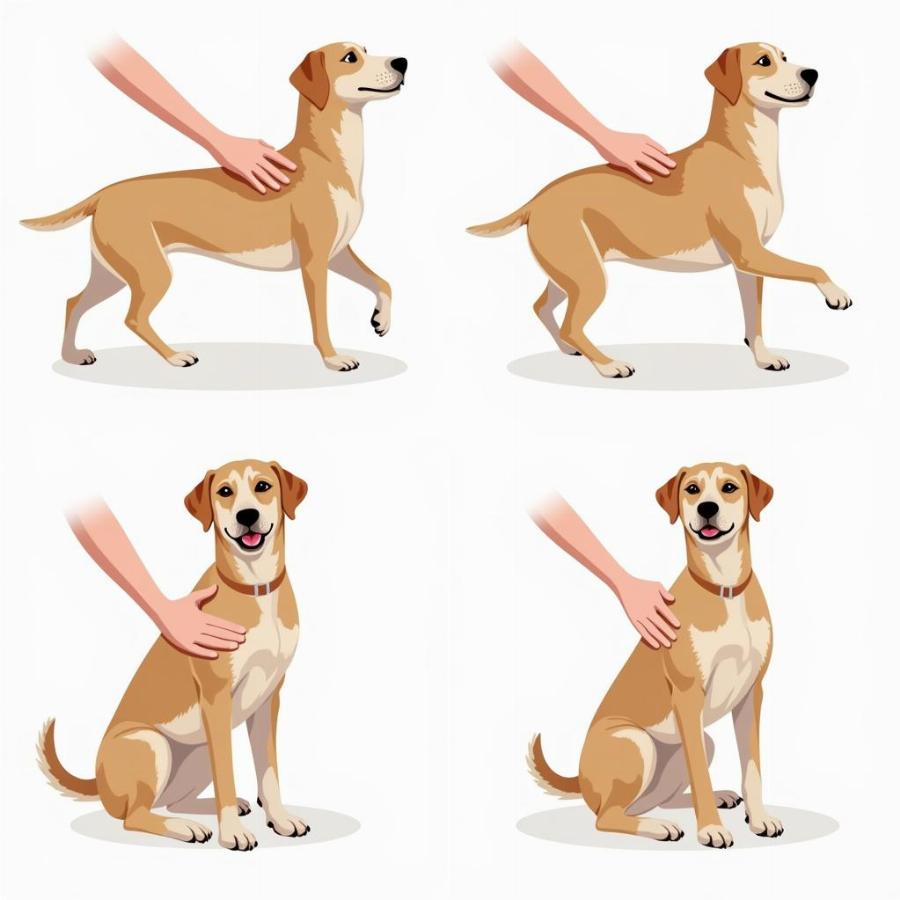Petting a dog is more than just a pleasant pastime; it’s a powerful way to build a strong bond with your canine companion. From reducing stress to strengthening your relationship, the simple act of petting a dog offers a wealth of benefits for both you and your furry friend. This article delves into the science behind the magic of touch, exploring why dogs love being petted and how you can make the experience even more enjoyable for them. We’ll also cover the importance of understanding your dog’s body language and respecting their boundaries to ensure a positive interaction every time.
Why Do Dogs Enjoy Being Petted?
Dogs, like humans, are social creatures that thrive on affection. When you pet your dog, their brain releases oxytocin, often referred to as the “love hormone.” This hormone plays a crucial role in social bonding and promotes feelings of trust and well-being in both humans and dogs. why do dogs like pets This mutual release of oxytocin further strengthens the bond between you and your furry friend, creating a positive feedback loop of love and affection.
The Science Behind the Stroking Sensation
Beyond the hormonal benefits, petting a dog also provides them with sensory stimulation. Their fur is covered with nerve endings that send signals to the brain when touched. The gentle pressure and rhythmic stroking can be incredibly soothing and relaxing for dogs, much like a massage for humans.
How to Pet Your Dog the Right Way
 Correct ways to pet a dog.
Correct ways to pet a dog.
While most dogs enjoy being petted, it’s essential to understand their preferences and body language. Not all dogs enjoy being touched in the same way, and some areas are more sensitive than others.
Where Do Dogs Like to Be Petted?
- Chest and Shoulders: These are generally safe and enjoyable areas for most dogs.
- Back: Gentle strokes along the back can be very relaxing.
- Base of the Ears: Many dogs enjoy gentle scratches behind the ears.
Areas to Avoid
- Face: Avoid petting a dog directly on the face as it can be overwhelming for them.
- Paws: Some dogs are sensitive about their paws, so it’s best to avoid touching them unless necessary for grooming.
- Tail: While some dogs tolerate tail petting, others may find it irritating.
Reading Your Dog’s Body Language
Paying attention to your dog’s body language is crucial to ensuring a positive petting experience. dogs that purr A relaxed dog will often have soft eyes, a loosely wagging tail, and a relaxed posture. is whale eye in dogs always bad If your dog shows signs of discomfort, such as lip licking, yawning, whale eye, or turning away, it’s essential to respect their boundaries and stop petting them.
Petting and Training: A Powerful Combination
Incorporating petting into your training routine can be highly effective. Rewarding your dog with pets and praise after they perform a desired behavior reinforces positive associations and strengthens your bond. dog whining for attention
Conclusion
Petting a dog is a simple yet profound act that strengthens the bond between human and animal. By understanding your dog’s preferences and respecting their boundaries, you can make petting a truly enjoyable experience for both of you. Remember to observe their body language and adjust your approach accordingly. So, next time you reach out to pet your furry friend, take a moment to appreciate the power of touch and the special connection you share.
FAQ
- Why does my dog lean into me when I pet him? This is a sign of affection and enjoyment. Your dog is showing you that they trust and appreciate your touch.
- How can I tell if my dog doesn’t want to be petted? Look for signs like lip licking, yawning, turning away, or stiffening their body.
- Is it okay to pet a strange dog? Always ask the owner for permission before petting a dog you don’t know.